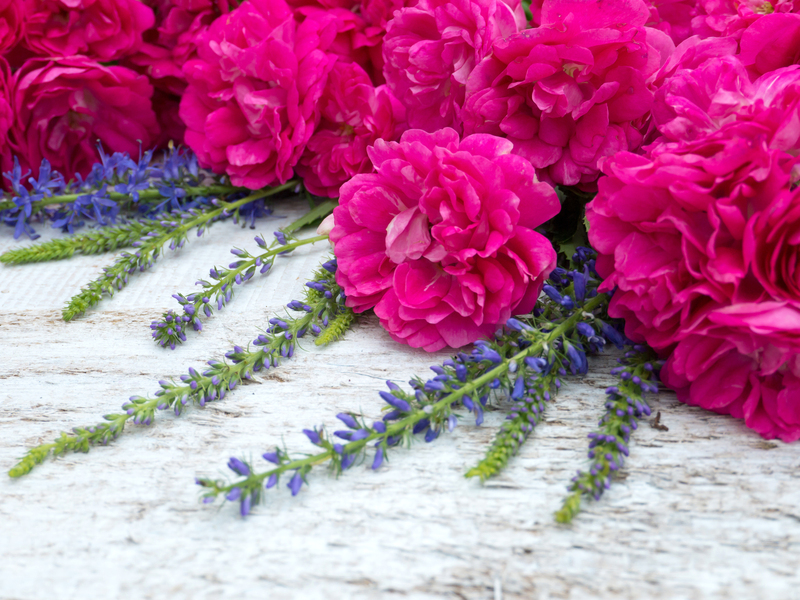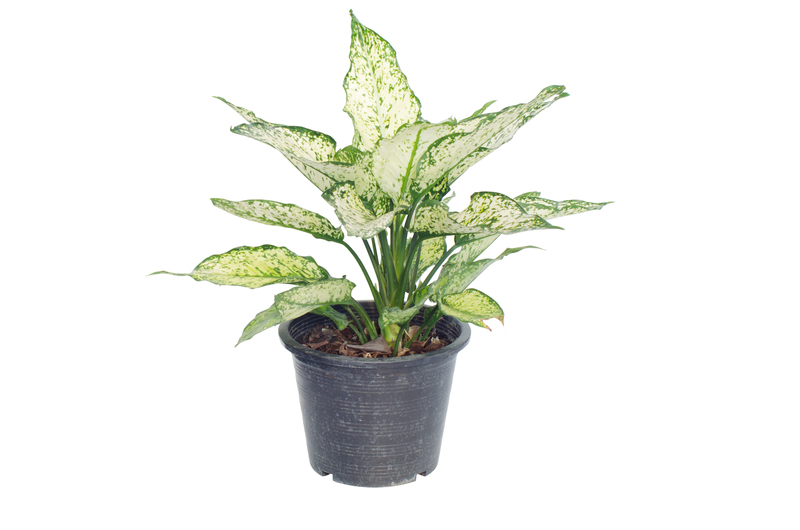Become a Hedge Artist: Creative Trimming Shapes That Inspire
Posted on 13/06/2025
Become a Hedge Artist: Creative Trimming Shapes That Inspire
Have you ever walked past a garden where the bushes are sculpted into whimsical animals, geometric patterns, or even storybook characters? Hedge artistry--often called topiary art--is a creative and satisfying gardening pursuit. Whether you're a homeowner yearning to elevate your yard's appeal, or a seasoned gardener seeking new challenges, learning the art of creative hedge trimming can turn ordinary green spaces into living masterpieces. Join us as we guide you through the fascinating world of hedge artistry, sharing everything from the basics to advanced shaping techniques and inspiring topiary designs.
What is Hedge Artistry?
Hedge artistry, or topiary, is the horticultural practice of clipping foliage and twigs of trees and shrubs to form defined shapes. These shapes can range from simple geometric forms--like spheres, cubes, or cones--to complex representations of animals, people, or abstract designs. This art form has historical roots dating to the Roman Empire, but it hit its stride during the Renaissance and continues to inspire modern gardeners worldwide.
Why Become a Hedge Artist?
- Creative expression: Hedge shaping is living sculpture--your imagination sets the limit.
- Boost curb appeal: Artistic topiary adds instant charm and elegance to any landscape.
- Sustainable beauty: Well-maintained hedges are evergreen focal points with year-round interest.
- Therapeutic benefits: The act of shaping and maintaining shrubs is both meditative and rewarding.

The Basics: Tools & Materials for Creative Hedge Shaping
Before you embark on your hedge art journey, having the right tools and materials is essential. Here's what you'll need:
Essential Hedge Artistry Tools
- Hedge Shears: For broad trimming and initial shaping.
- Pruning Shears: For precision snipping, especially on detailed areas.
- Loppers: Ideal for thicker branches and rejuvenating old hedges.
- Topiary Frames: Metal or wire frames help create and maintain complex shapes more easily.
- Topiary Shears: These specialized scissors are perfect for intricate details and finishing touches.
- Gloves and Eye Protection: For safety while handling tools and thorny species.
Best Plants for Hedge Art Creation
Not all plants are suitable for intricate trims. The following species are favorites among hedge artists thanks to their dense foliage and resilience:
- Boxwood (Buxus sempervirens): Tightly packed leaves and slow growth make it perfect for detail work.
- Yew (Taxus baccata): Adaptable and easy to shape, it can tolerate heavy pruning.
- Privet (Ligustrum): Fast-growing and lush, great for larger topiary designs.
- Holly (Ilex): With its glossy leaves, holly adds extra visual interest to your art.
- Euonymus: Colorful foliage offers a unique look for creative hedge shapes.
Getting Started: Fundamentals of Creative Hedge Trimming
Selecting Your Canvas: Choosing the Right Shrub
When preparing to become a hedge artist, start with the healthiest shrubs possible. Look for even, disease-free growth. If starting from scratch, plant shrubs close together for denser results. Remember, patience is vital: slower-growing shrubs take years to reach their full potential, but offer easier precision and longevity.
Understanding Pruning Principles
Pruning is both art and science. Here's what every aspiring hedge artist needs to know:
- Regular Trimming: Consistent shaping encourages bushier growth and maintains your design.
- Gradual Shaping: Don't try to achieve your final form in a single season--let the plant grow into the shape.
- Hygienic Practices: Sterilize your tools before and after use to avoid spreading plant diseases.
- Seasonal Awareness: Most shrubs benefit from shaping in late spring or early summer, right after the growing flush.
Creative Shape Inspirations: Hedge Art That Dazzles
Here are some time-tested hedge shapes to get your creativity flowing:
Classic Geometric Hedge Art
- Globes & Spheres: These clean, rounded shapes are timeless and perfect for beginners.
- Cubes & Rectangles: Great for formal gardens, classic lines add a sense of order and elegance.
- Pyramids & Cones: Excellent for vertical accents or to flank entryways.
- Spirals: Eye-catching twists that showcase both patience and artistry.
Animal & Fantasy-Inspired Hedge Shapes
- Peacocks, Rabbits, or Snails: Impress visitors with simple animal profiles--it all starts with an outline.
- Dragons or Dinosaurs: Use flexible wire frames for ambitious designs.
- Butterflies and Birds in Flight: Express movement through creative silhouette work.
Memorable Thematic Garden Topiary
- Alphabet & Monograms: Carve your initials or meaningful words into the landscape.
- Chess Pieces: Imagine a garden where knights, pawns, or queens loom among the flowers.
- Maze Paths: Tall, sculpted hedges create interactive garden art.
- Seasonal Motifs: Hearts for Valentine's Day, pumpkins for Halloween, or stars for festive occasions.
Step-by-Step Guide: Transforming Your Shrubs into Hedge Art
- Sketch Your Vision: Grab a notebook, research images online, and doodle your preferred shape. This helps you visualize proportions and design details before making the first cut.
- Set Up a Guide: For complex designs, build a metal or wire frame as an outline. Secure it to your shrub as a visual guide.
- Make the Initial Trim: Using hedge shears, roughly shape your bush into a mass that approximates your final design--think of it as blocking out the form.
- Refine the Details: Switch to smaller topiary or pruning shears. Follow the contours of your frame or sketch, making careful, incremental cuts.
- Step Back Often: Regularly review your work from several angles to maintain symmetry and proportion.
- Maintain and Perfect: Schedule regular trims--at least once every 4-6 weeks during the growing season--to keep edges crisp and prevent the shape from becoming overgrown.
Pro Tips for Successful Hedge Artistry
- Invest in sharp, quality tools. Dull blades tear rather than cut, damaging your hedge and making precise shapes difficult.
- Start with simpler shapes. Once you master the basics, graduate to more detailed topiary.
- Work in overcast weather when possible. Pruning under direct sun can stress plants and result in leaf burn.
- Shape from the bottom up and outside in. This technique prevents accidental removal of vital branches.
- Water and feed appropriately. Well-nourished shrubs recover faster from pruning and stay lush and green.
Topiary Maintenance: Keeping Your Hedge Art Pristine
The beauty of hedge artistry lies in its permanence--with consistent care, your creative trimming shapes will thrive for years. Prioritize:
- Regular Trimming: Slow-growing species may only need 2-3 trims per year, while faster varieties require monthly attention.
- Pest Inspection: Look for common issues like leaf spot, aphids, or scale insects, and treat promptly.
- Feeding and Mulching: Use slow-release fertilizer and maintain a mulch layer for moisture retention and weed suppression.
- Winter Protection: In cold climates, cover delicate shapes with burlap to prevent snow and frost damage.
Advanced Hedge Shaping Techniques
Cloud Pruning
Also known as niwaki in Japanese gardening, cloud pruning is an advanced method where shrubs are sculpted into cloud-like, rounded forms set on visible trunks. This creates a sense of movement and minimalism, ideal for Japanese-inspired gardens or contemporary landscapes.
Living Sculptures
Ambitious hedge artists often use connected shrubs or plantings to create large, unified designs--think of archways, green tunnels, or even sculpted garden furniture. This approach requires planning and yearly shaping but results in jaw-dropping garden features.
Espalier and Pleaching
While not traditional topiary, espalier (training hedge branches flat against a wall) and pleaching (weaving hedge branches into fences or screens) are artistic trims that blend function with form. These techniques maximize space and create stunning, orderly landscapes.
Finding Inspiration: Ideas from Famous Hedge Artists
Explore masterpieces created by renowned hedge artists and public gardens for ideas:
- Levens Hall, England: Home to the oldest topiary garden in the world, with jaw-dropping shapes and history.
- Chateau de Villandry, France: The gardens' elaborate box hedges weave patterns of hearts and spirals.
- Disneyland's "It's a Small World" Garden: Iconic cartoon-inspired shapes delight visitors young and old.
Royal Horticultural Society (RHS) and Topiary Art Design offer more hedge art inspiration online.

Common Mistakes and How to Avoid Them
- Impatience: Rushing causes uneven, unsatisfactory shapes. Hedge artistry thrives with time.
- Neglected Maintenance: Overgrown shapes are hard to recover--schedule regular trims.
- Poor Species Selection: Choose hedge plants known for dense, upright growth for best results.
- Excess Removal: Cutting too much green at once weakens shrubs--always leave ample foliage for health.
Conclusion: Start Your Hedge Art Journey Today
Becoming a hedge artist is both a creative and practical pursuit. Creative hedge trimming transforms your green space into a living canvas, inspiring everyone who walks by. With patience, practice, and the right tools, you can master everything from classic globe shapes to intricate living sculptures.
Unleash your inner artist, experiment with new shapes, and take pride in your living masterpieces. Whether you start with a simple sphere or aim to create a labyrinth of fantasy creatures, hedge art is a rewarding journey for every garden enthusiast.
Ready to become a hedge artist? Sharpen those shears, pick your favorite design, and start shaping your very own living sculptures today!
FAQs: Creative Hedge Trimming
- How often should I trim my hedge art? Most fast-growing shrubs require monthly trims during the growing season, while slow growers need 2-4 trims per year.
- What's the best shape for beginners? Spheres and cones are easiest, providing the building blocks for more complex forms.
- Can I create hedge art in small gardens? Absolutely! Choose compact species and stick with smaller, geometric shapes or themed pots for limited spaces.
- Do I need topiary frames? Frames are helpful for intricate or large projects but aren't necessary for geometric shapes--many hedge artists work freehand once experienced.
Embrace the dirt under your nails and the joy of artistic creation--become a hedge artist and let your garden tell the story of your imagination!

